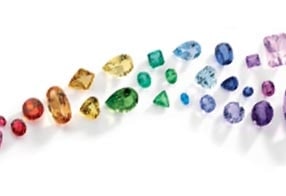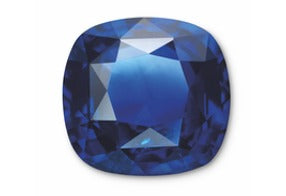EMERALD
Gemstone family: Beryl
Moh's scale of hardness: 7.5-8
Lustre: Vitreous
Birthstone: May
About: Emerald’s colours vary from vivid yellowish green to bluish green and the trace elements that cause these vibrant greens are chromium, vanadium and iron. The name “emerald” derives from “smaragdos” the word for “green gem” in ancient Greek and it is a variety of the beryl species. The most valuable emerald colour is the “Colombian” which refers to the colour that Colombian emeralds display, which is a vivid slightly bluish green. Trapiche emeralds are a rare variety of emeralds that display a characteristic pattern consisting of six rays that emanate from its hexagonal centre and are usually cut into cabochons. Almost all emeralds are moderately to heavily included so the colour becomes the primary factor for their value.
Origin: Columbia is known for producing the highest volume of emeralds and most importantly the finest ones. Other significant sources are: Zambia, Brasil, Zimbabwe, Afganistan, India, Madagascar, Pakistan and Russia.
Use in jewellery: Due to Emerald’s brittleness and because of their many inclusions they are not ideal for everyday jewellery, unless they are set into pendants or earrings with secure settings that protect the stones. Depending on the transparency of the stone which can be anything between transparent and opaque emeralds are cut into faceted gems, cabochons, beads or carvings.
Treatments, synthetics and imitations: Emeralds, because of their inclusions, are one of the most commonly treated stones to the extent that it is almost accepted in the trade. The most common treatment is fracture-filling with oils, resins or other treaters that improve their colour and clarity. The first synthetic emerald was produced by Jacques Joseph Ebelman in the late 19th century but it was later popularised by Carroll Chatham Emeralds. Lab-grown emeralds display an almost unreal green and are always very clean, they have similar chemical properties to natural emeralds but their value is significantly lower so they should always be disclosed as synthetics. Some of the materials that are most commonly used to imitate emeralds are: glass, garnet-and-glass doublet, synthetic spinel triplet, sapphire and synthetic sapphire doublet and dyed quench-crackled quartz.
Famous examples: One of the most unique emerald in the world is the 217.80ct “Moghul Emerald” crystal which was inscribed and carved in the 17th century with a Shi’a prayer on one side and a flower pattern on the other.


















